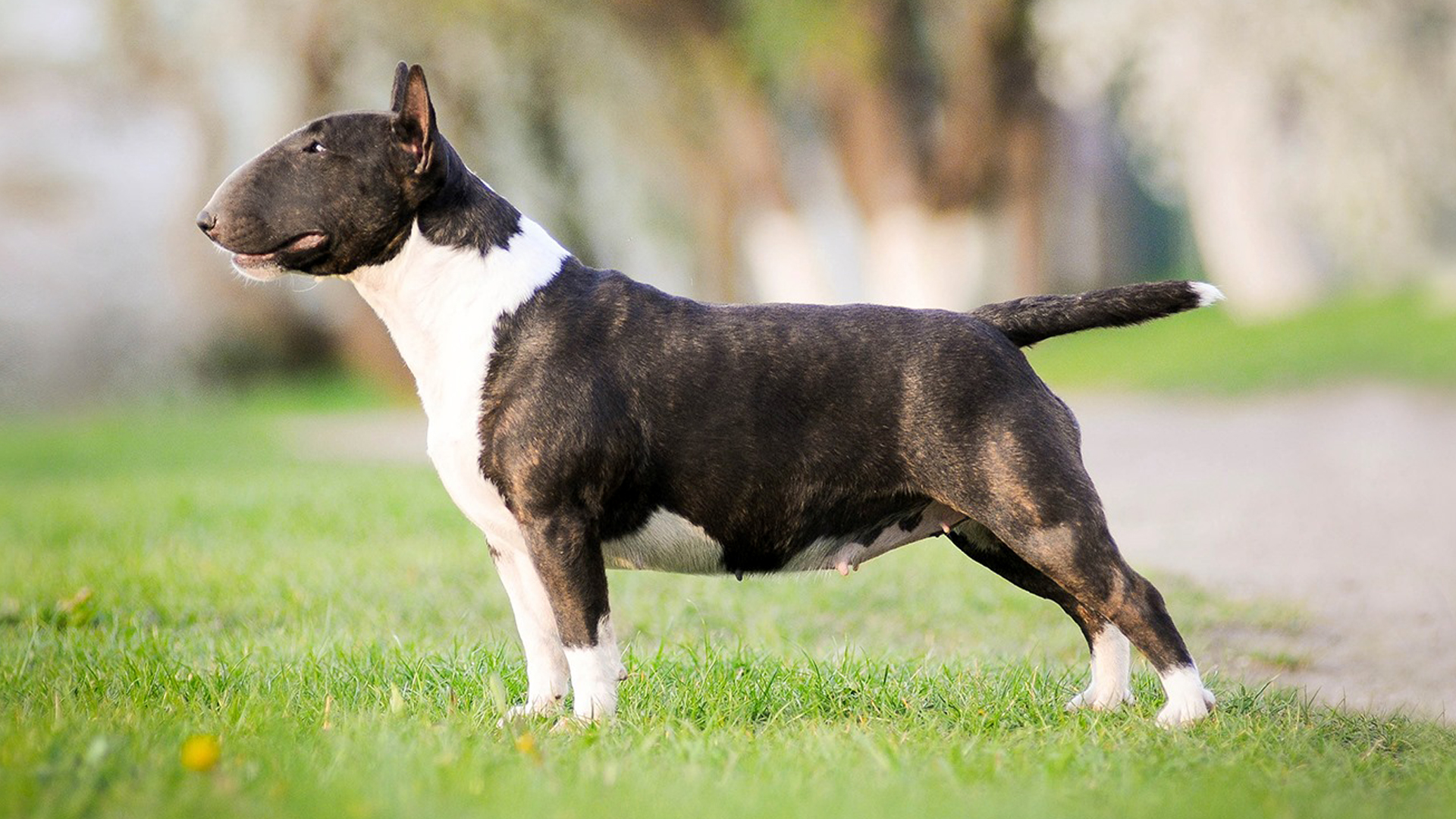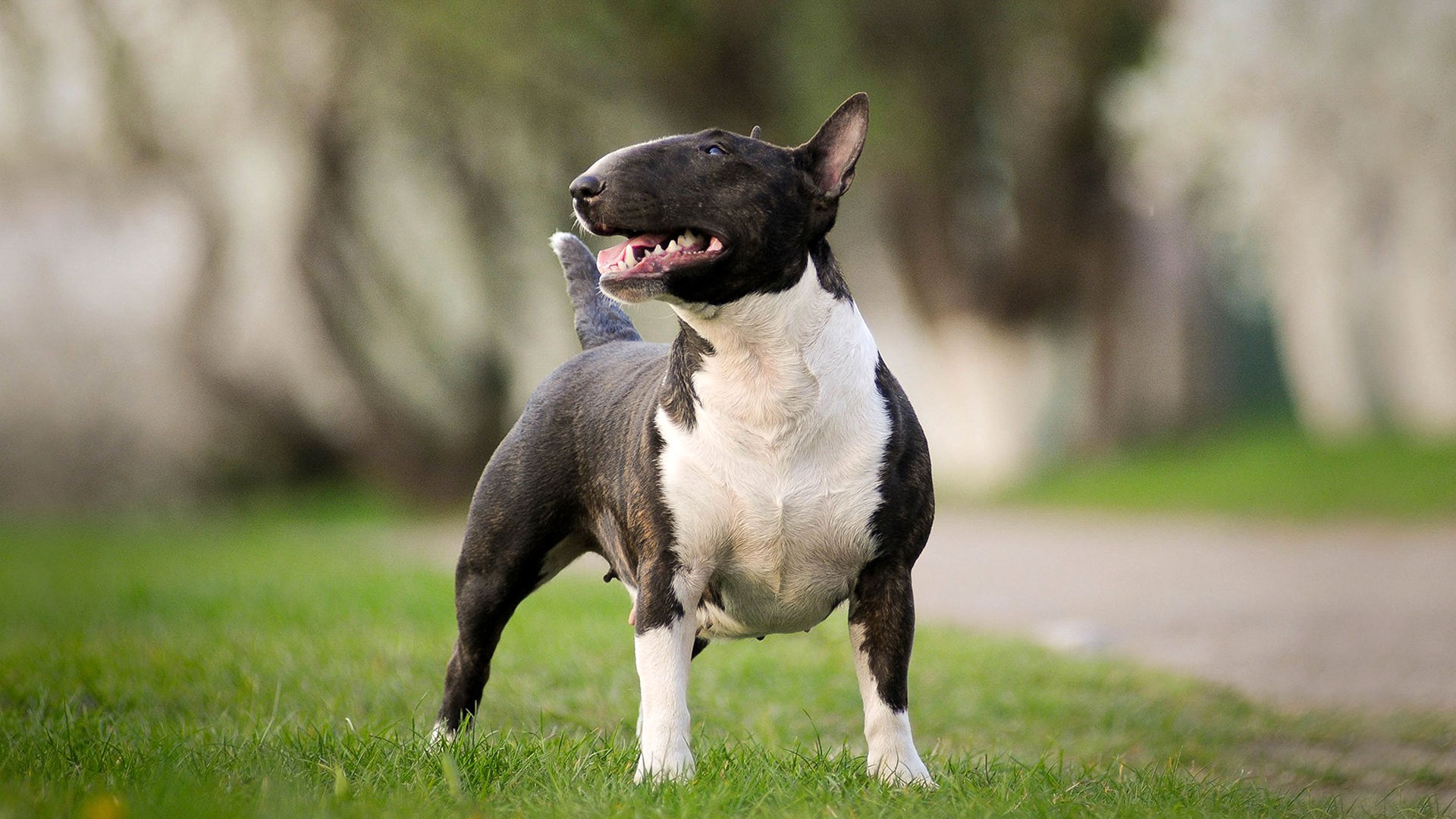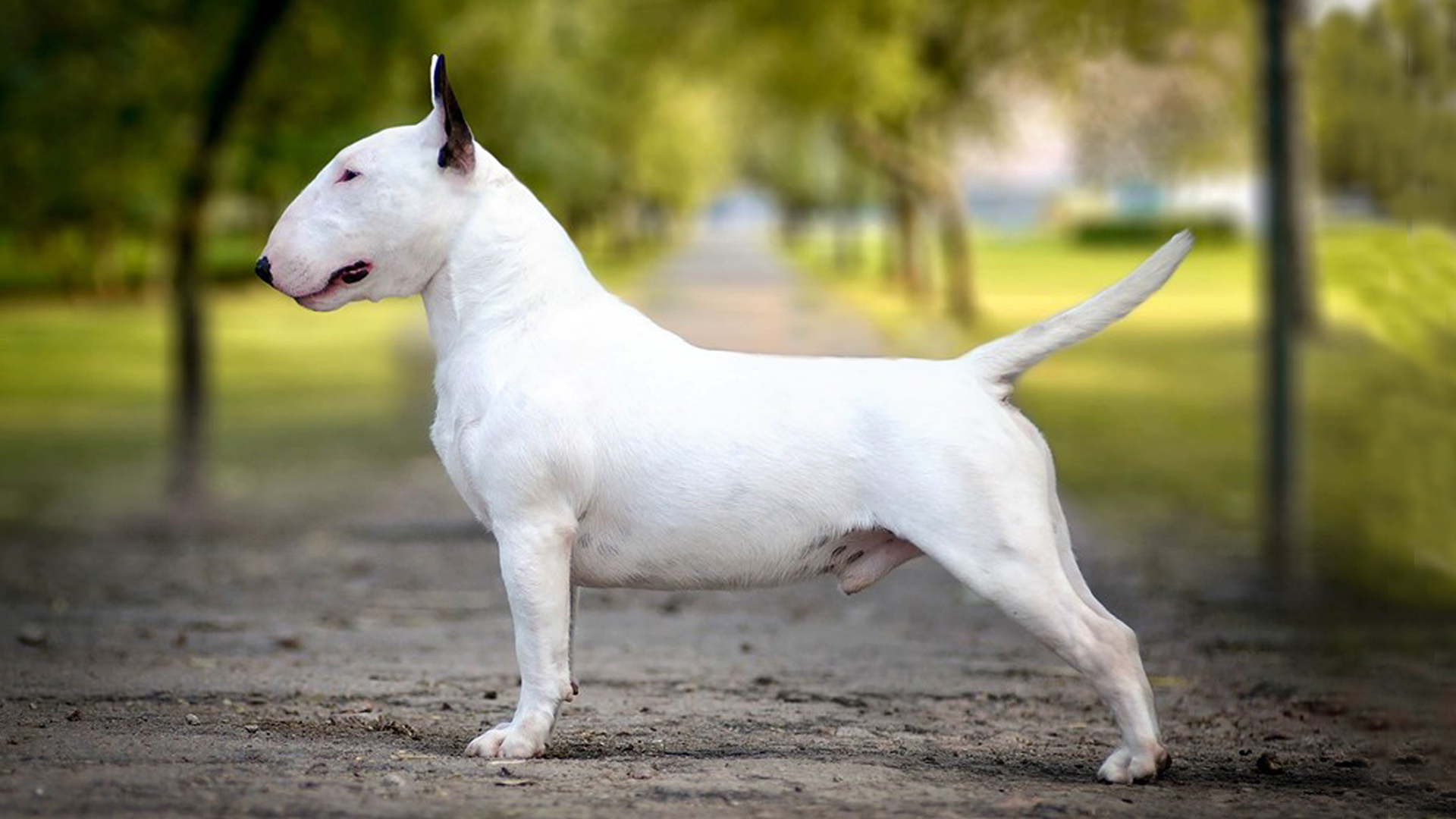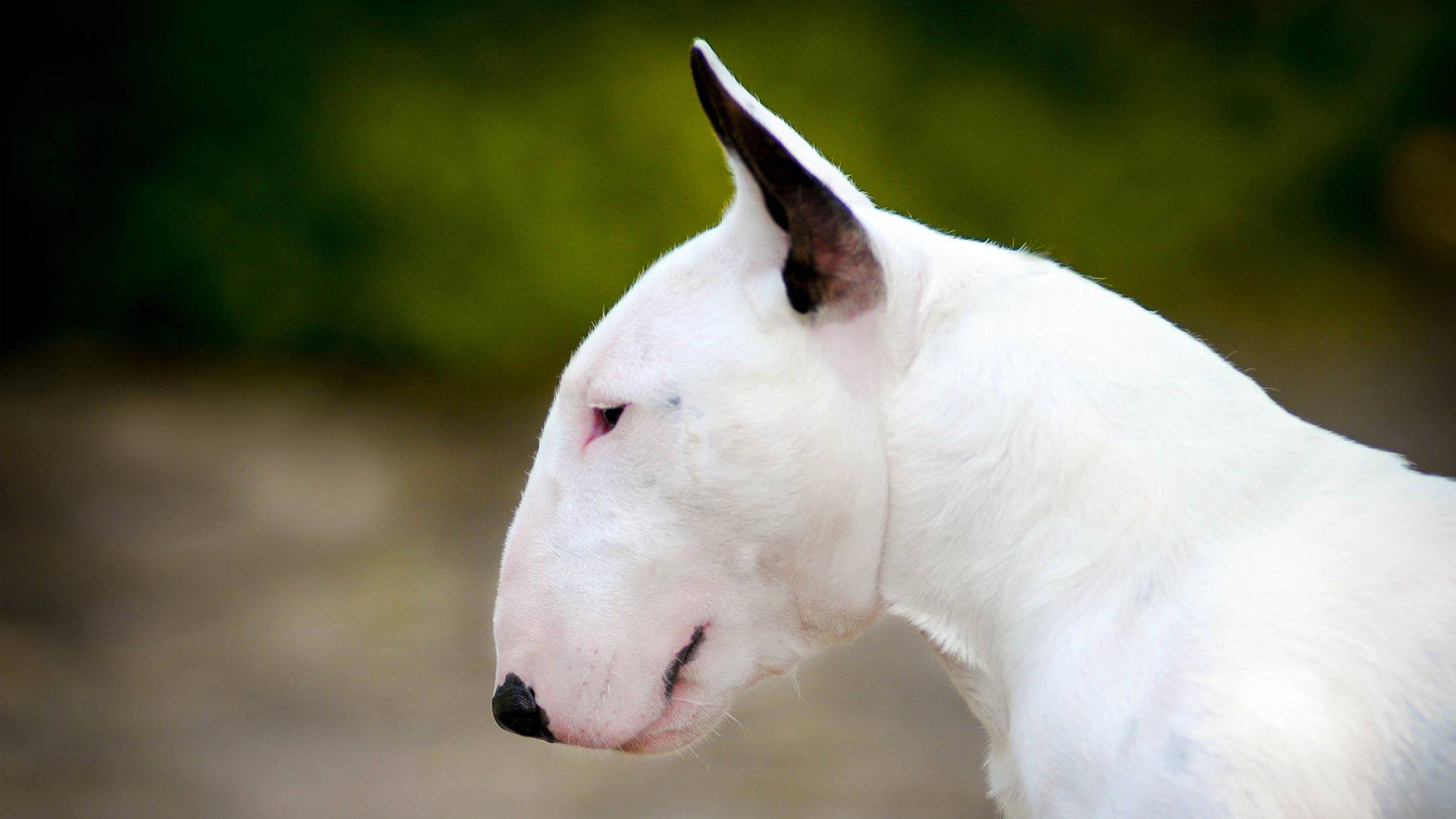No one could mistake a Bull Terrier for anything else. Built on lines reminiscent of the bull from which his name is partly derived, he stands on firm, powerful legs, staring straight at you. But for all his somewhat forbidding presence, he is, in fact, a kindly chap, loving the human race, even if he is none too sure about his attitude to the dog next door. Handled properly, he will live in peace with his neighbour, but he does need a firm hand if he is to fit effectively into modern life.
It was a certain James Hinks who first standardised the breed type in the 1850s, selecting the egg-shaped head. The breed was first shown in its present form at Birmingham (UK) in 1862 and the Bull Terrier Club was formed in 1887.
Most people think of him as being basically white all over, with an occasional piratical patch over one eye, but he also comes in other hues, including brindle, red, fawn and tricolour. One noteworthy feature of his standard is that ‘There are neither weight nor height limits, but there should be the impression of maximum substance for size of dog consistent with quality and sex’.
MINATURE BULL TERRIER
Smaller examples of the Bull Terrier have been known since the early nineteenth century but they fell out of favour prior to the First World War and were removed from the British Kennel Club Breed Register in 1918. In 1938, a revival was spearheaded by Colonel Richard Glyn and a group of fellow enthusiasts, who formed the Miniature Bull Terrier Club. The standard is the same as that of the Bull Terrier with the exception of their size, which should not exceed 35.5 centimetres (14 inches).







